Power consumption and loads
The 19 watts in the idle are quite high and so not really nice. The approximately 180 watts in the stress test and in the gaming loop are slightly above the power target of 175 watts set in the BIOS ex works. It is difficult to say whether this is due to the board layout, where consumers are directly supplied outside of monitoring, but it is very obvious. After all, the maximum value for overclocking is again 5 watts above what the BIOS specifies as the maximum power limit.
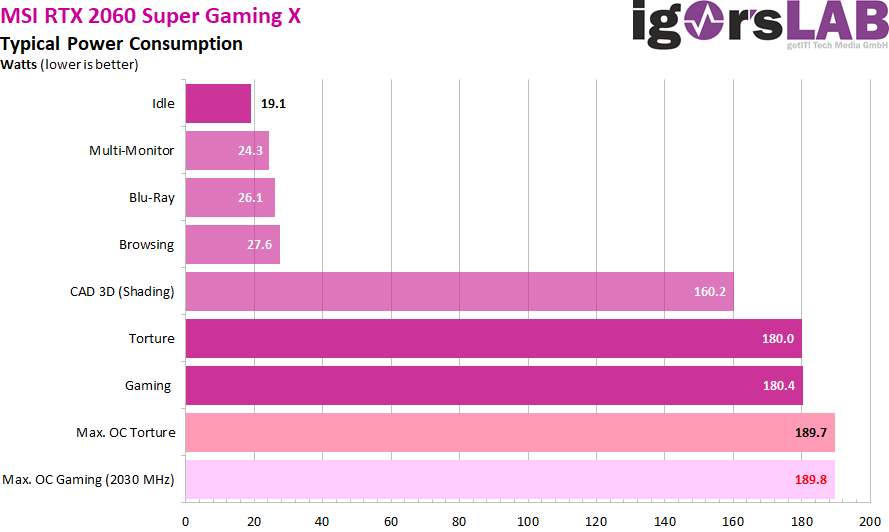
Here again a short excerpt from what Nvidia gave this card in the firmware limits, because at least with the default power limit the GeForce RTX 2060 Super is only 15 watts above that of a "normal" RTX 2060.
The voltages are even significantly lower than with the reference card, whereby in the end the permissible board power in the OC was the limiting factor, not always the voltage (but from time to time also). One notices very clearly that Nvidia deliberately limits here and that the thermal influence of the cooling is clearly visible.
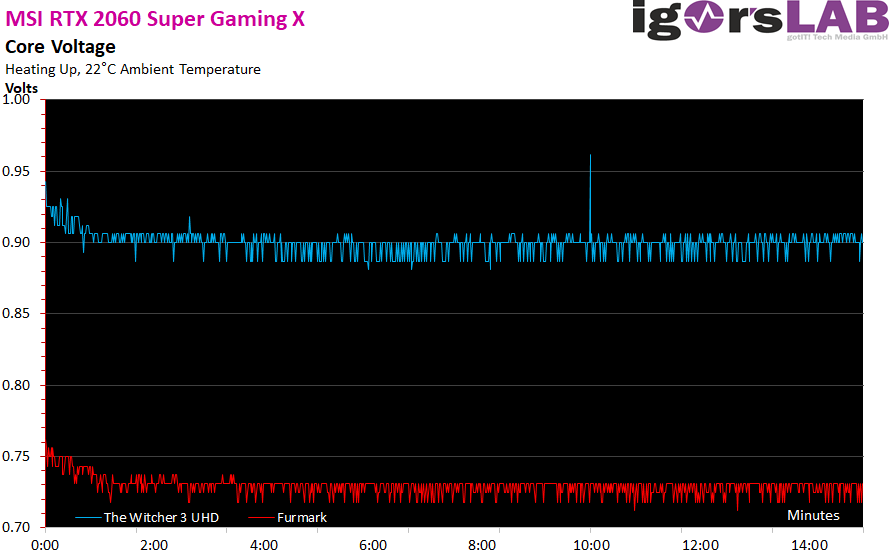
The load distribution on the rails is free of criticism, because the maximum permissible 5.5 amperes of the motherboard slot are not exceeded. Balancing has been very successful here.
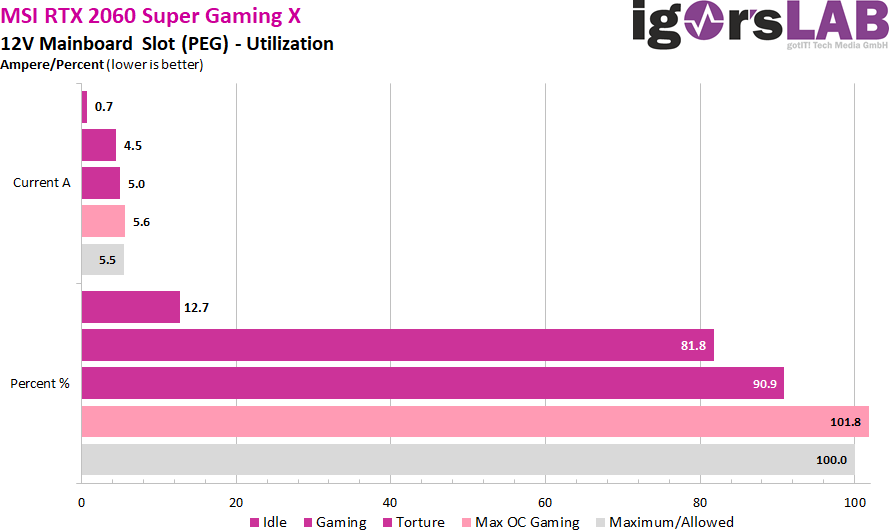
Power supply design and peak loads/currents
As I have already demonstrated in detail in my basic article "The fight of graphics card against power supply – power consumption and load peaks demystified", there are also temporarily higher loads in the millisecond range, which are unfavorable in case of unfavorable designed or improperly equipped power supplies can already lead to unexplained shutdowns. The TBP (Typical Board Power) measured by the graphics card manufacturer or the reviewers does not really help for a stable design of the system.
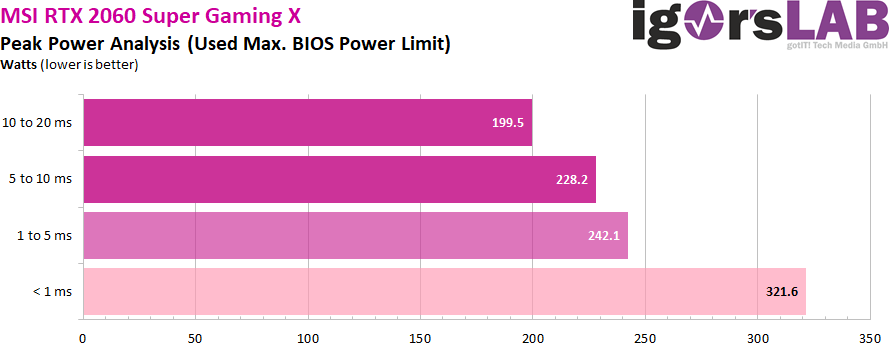
Peaks with intervals between 1 and 10 ms can lead to shutdowns with very fast-reacting protective circuits (OPP, OCP), especially for multi-rail power supplies, although the average power consumption is still in the norm. For the MSI RTX 2060 Super Gaming X, I would therefore calculate with a good 230 watts to have enough reserves in case of a case. A short excerpt with higher resolution now shows us the 20 ms intervals, how I run them automatically for valuation:
Detailed recording of average power consumption and flowing currents
As usual, I now also set aside the power consumption and the flowing currents as detailed graphics of my oscillograph measurements. A service that hardly anyone else offers and which shows how the maps "tick" in detail:















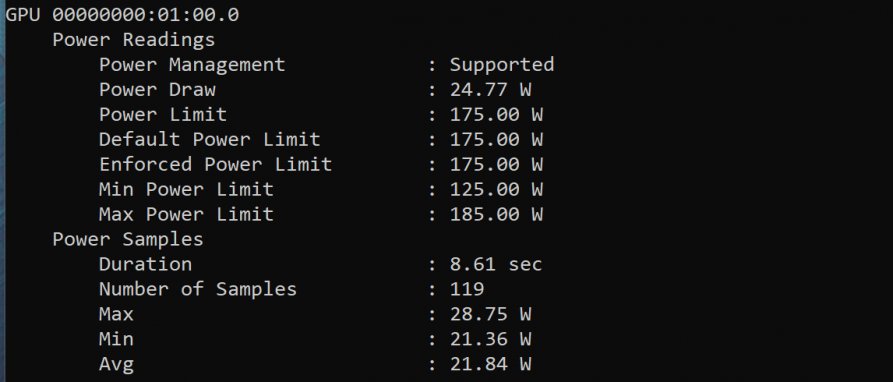




































Kommentieren